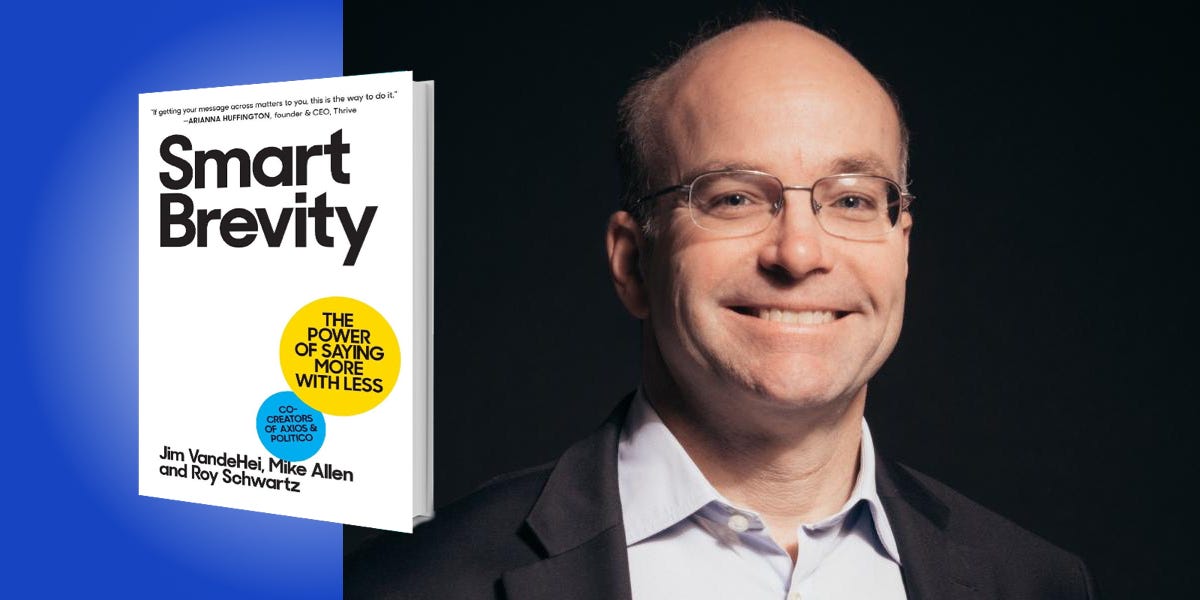How to Write Like a Human
Axios' Mike Allen shares 5 key insights from Smart Brevity: The Power of Saying More with Less

If you use words to get your points across — and you do — you now find yourself in competition with AIs and bots who have learned to do the same thing. And that competition is playing out in a noisy environment, where attentions are divided and distraction is the norm. So if you want other humans to respond to your emails, read your tweets, and listen to your presentations — and you do — you need to learn how to convey a lot of information in a limited time. That approach is the guiding principle of Axios, the news website that specializes in brief but impactful storytelling. Now the company’s cofounders Jim VandeHei, Mike Allen, and Roy Schwartz have written a book explaining their approach to writing, an approach that could be useful in your own business and personal life. It’s called Smart Brevity: The Power of Saying More with Less, and you can read or listen to co-author Mike Allen share his key insights below.
The 5 Key Insights
1. No one's reading most of what you write.
2. Write like a human.
3. Do the work for the audience.
4. Spell out your takeaways.
5. Just stop.
1. No one’s reading most of what you write.
I started in newspapers, where I was paid by the word. The more you wrote, the better chances of getting on the front page. Those who wrote even more had a shot at the Sunday front page. If you wrote even more than that, you might be nominated for a prize or win an award. But when we moved into the digital world and started Politico, we started to see data revealing that even our moms weren’t reading that. The Washington Post, which has some of the best journalism in the world, only had people viewing content for an average of 20 seconds per piece.
Keep reading with a 7-day free trial
Subscribe to The Next Big Idea Club Book of the Day Newsletter to keep reading this post and get 7 days of free access to the full post archives.


